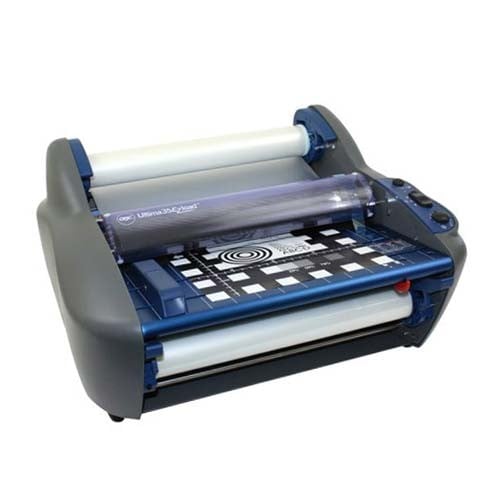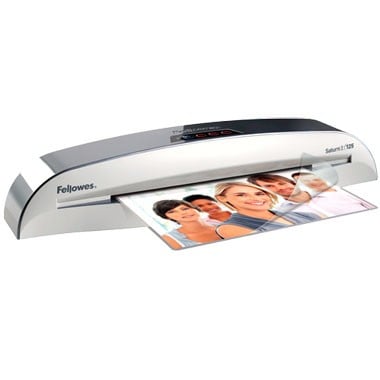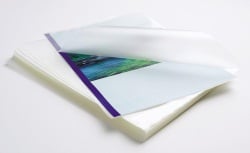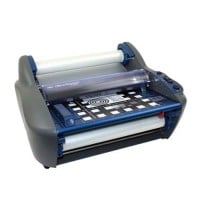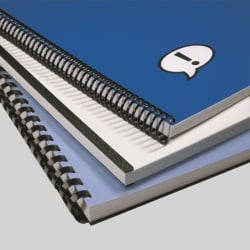MyBinding Knowledge Base
- Binding (248 Article)
- General Binding (42)
- Plastic Comb Binding (57)
- Fastback Binding (59)
- Perfect Binding (2)
- Modular Punching (8)
- Zipbind (3)
- Twin Loop Wire (13)
- Coil Binding (22)
- Thermal Binding (14)
- Strip Binding (1)
- VeloBind (4)
- Binding Covers (14)
- Proclick Binding (10)
- SureBind (4)
- Screw Post (2)
- Hole Punches (2)
- Staplers (4)
- Komtrak Insprial Binding (2)
- Paper (1)
- Rhin-O-Tuff (5)
- Binding Machines Comparison (17)
- Laminating (109 Article)
- General Laminating (26)
- Roll Lamination (16)
- Pouch Lamination (36)
- Pouch Board Laminator (3)
- School Laminator (3)
- Foil Laminating (3)
- Royal Sovereign Laminators (10)
- Laminators Comparison (3)
- Boards (11 Article)
- Bulletin Boards (3)
- Whiteboards (5)
- Chalkboards (1)
- Paper Shredders (44 Article)
- General Shredding (35)
- Industrial Shredders (1)
- Cross-Cut Shredders (2)
- Cardboard Shredders (1)
- Multimedia Shredders (1)
- Personal Shredders (1)
- High Security Shredders (2)
- Ring Binders (9 Article)
- Specialty Binders (2)
- Reinforced Paper (1)
- Health Care Punched Paper (1)
- Perforated Paper (2)
- View Binders (1)
- Index Tabs (9 Article)
- Index Tab Dividers (2)
- Copier Tabs (4)
- Pocket Folders (1)
- Custom Index Tabs (1)
- Pre-Printed Index Tabs (1)
- Paper Handling (37 Article)
- Paper Folders (9)
- Paper Joggers (2)
- Guillotine Cutters (4)
- Rotary Trimmer (3)
- Electronic Paper Cutters (1)
- Corner Rounders (2)
- Paper Scoring (2)
- Paper Drill (2)
- Booklet Makers (3)
- Stack Cutters (1)
- Paper Handling Equipment Comparison (5)
- ID Accessories (12 Article)
- Badge Holder (1)
- Lanyards (8)
- Badge Reels (1)
receive
$5off
*On order $25 or more.
What are the Safety Features to Look For When Buying a Guillotine Paper Cutter?
Guillotine paper cutters have developed something of a dangerous reputation. Because they are equipped with extremely sharp blades and exert substantial force, they are effective in getting things done. The same features that make paper cutters effective also make them dangerous. Because of these things, accidents involving these paper cutters do occur from time to time. Paper cutters are available in more styles than you can possibly imagine. There are literally hundreds of styles of available. Not all paper cutters are built the same-especially when it comes to quality and safety. If you are considering purchasing this type of machine, you can read this article for some information on critical safety features of the guillotine paper cutter.
Blade Guard
The blade guard is, by far, the most important safety feature available on guillotine cutters. Surprisingly, many people remove the safety guard when they use the cutter. While the guard may be a little obtrusive, working without fingers is far more troublesome. Sometimes the blade guard is a metal bar positioned close to blade, but superior blade guards are made of plastic and will prevent users from getting their fingers near the blade on either side of the machine.
Blade Latch
The blade latch locks the blade down when you are not using the cutter. It is usually a small wire that simply hooks over the handle. Sometimes it’s a piece of metal connected to the bottom of the handle. The purpose of the blade latch is to keep the blade down so that no one accidentally or impulsively grabs, strokes, or touches the blade. Obviously any of these could result in a serious and potentially life-altering injury that could have been prevented by simply exercising some caution and common sense.
Tension Spring
All guillotine type units should be equipped with tension springs. The tension spring is attached to the back of the blade and is engineered to prevent the blade from rushing down when the handle is released. Guillotine cutters without this spring live up to their name, guillotine, and are very, very dangerous. You should never operate a paper cutter that has no tension spring. It is literally an accident waiting to happen. No paper cutting task is worth losing a digit over. If your cutter has no tension spring, put it in a safe and secure location until the tension spring can be replaced.
The biggest single factor in guillotine paper cutter safety is the user. There is simply no substitute for good common sense. Do not use one when you are distracted or when you cannot give your full attention to the task at hand. Even units with safety features can still cause accidents. These types of machines are wonderful tools because of their powerful blades and ability to easily cut through piles of paper. However, for the very same reasons it is a good tool, it is a dangerous one. Always exercise caution when using one of these machines and do not use one that isn’t equipped with safety features.
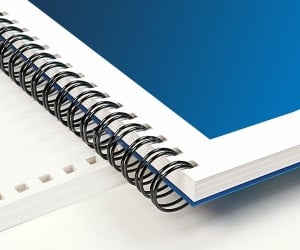
< Over the years, a number of customers have asked me whether they can use twin loop wire with their plastic comb binding machine. These customers often don’t want to have to buy a brand new machine but like the look and feel of twin loop wire binding. However, the answer to their question isn’t as simple as it seems. You see, they actually do make twin loop wire that is designed to work with the plastic comb binding hole pattern. With that said, if you want to use these wires you are going to need a way to close the wires. What is Spiral-O Wire? Let me explain a little bit more…There is a product that we carry called Spiral-O Wire. This wire has 19 loops and is designed to work with the hole pattern from a plastic comb binding machine. Spiral-O Wire is sometimes called Wire Combs or Ibico Wire and was originally designed for use with some of the older Ibico binding machines. A number of the older Ibico plastic comb binding machines also included a twin loop wire closer on the front of them to allow users to use both plastic combs and wire. This 19 loop wire was designed for this purpose. What Equipment is Needed? As the Ibico brand has been phased out by GBC and all of the older Ibico plastic binding machines have been replaced with new models, they no longer have the twin loop wire closer on the front of them. This presents a problem in trying to use these spiral-o wires since you can’t use the wires without a way to close them. One of the only options left is to purchase a Twin Loop wire closer. However, since twin loop wire closers are not incredibly cheap this option usually only appeals to users who have larger electric plastic comb binding machines. Otherwise, it is often advisable to simply buy a low end 3:1 pitch twin loop wire binding machine (the supplies are cheaper). This being said, if you have one of the older Ibico binding machines that has a wire closer included you are in luck. The Spiral-O binding supplies that we carry will work perfectly with your machine and you will be able to use both plastic combs and wire depending on your needs. These Spiral-O binding supplies are available in Black, Silver, White, Blue and Red and in sizes up to 1″ in diameter. If you aren’t sure what type of wire binding supplies that you need to work with your machine simply give us a call. Our trained sales representatives will be glad to help you find the correct supplies for use with your machine.(Read More)
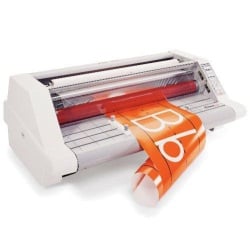

Loading...


